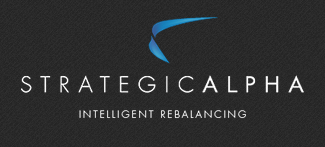An active manager launches a new fund and builds a tremendous three-year track record, outperforming benchmarks with less volatility. The manager then hits everyone’s radar, and assets begin to pile into the fund. Soon, the internal discussion at the fund management company is a debate between closing the fund in order to preserve the manager’s ability to generate alpha, or leaving it open and gathering all of the assets possible.
No one collecting a management fee is incentivized to close a fund.
Mapping the expected alpha generation of different investment formats against the accepted capacities of these strategies illustrates this point:
Beginning with highest alpha, lowest capacity strategies, proprietary trading often benchmarks against being able to create 75-100% returns on the margin a trader is provided over the course of a year. While relative to traditional asset management these returns sound impossibly high, the facts remain that many prop-trading strategies can produce these levels of return, with far less volatility than equities – but only up to a certain capacity. In fact, many trading groups think more about how many dollars can be pulled out of the market than what rate of return can be generated. Interestingly, these traders are often compensated on incentive fees (a percentage of profits) only.
Moving down the alpha curve, or out the capacity curve, emerging manager hedge funds which implement limited-capacity strategies often have the capability to produce 25-50% returns per annum, with drawdowns limited to 10-20%. The primary source of income for these firms is derived again from their incentive fees, with nominal management fees barely covering the costs of operation.
Further out you see established hedge funds, running billions of dollars. At this stage, big institutional investors who pay their annual 2% management fees provide the core, consistent revenues to the firm, and so these groups often (not always) reduce risk, target alpha generation in the high single digits per annum, and avoid taking the positions that helped get them into the billions of dollars in AUM.
Sharing the same independent variable value, long-only managers in small caps, emerging markets and other capacity constrained asset classes are often able to generate vastly more alpha relative to their large cap and government bond counterparts, although their limited ability to hedge risks precludes them from generating the same alpha as hedge funds of similar size. These managers are entirely compensated by management fees, and fall into the conundrum presented in the introduction – do we maintain our superior risk adjusted performance, or grab for assets and make hay while the sun is shining?
Frequently, these managers slide further down the alpha curve, taking on upwards of $50 and $100bn in “actively managed” portfolios. Unsurprisingly, assets and fees grow while alpha-per-AUM declines rapidly. Investors rarely fire a manager for middling performance, so more and more active funds tend towards the lowest point on the graph, an index strategy that can handle vastly more assets, but by definition generates no alpha.
Fund managers with smaller, more nimble portfolios have long argued that they are able to generate more alpha than the behemoths in their space, and there is no shortage of statistical evidence supporting their claims. Alpha generation is clearly negatively correlated with assets under management. Alpha is not infinite, and the more assets a manager has, the lower the alpha-per-dollar managed. Be advised that if you are seeking alpha, the capacity and compensation structures of your managers are critical.
Dave Donnelly is the Founder and CEO of Strategic Alpha, a rebalancing service dedicated to helping financial advisors improve client outcomes. www.Strategic-Alpha.com

